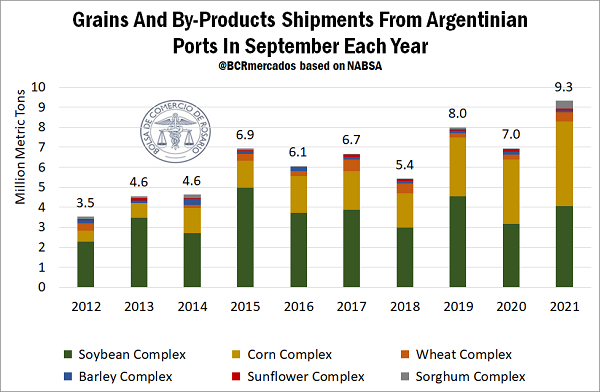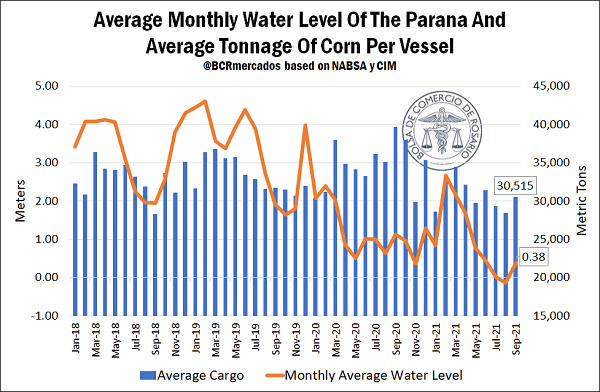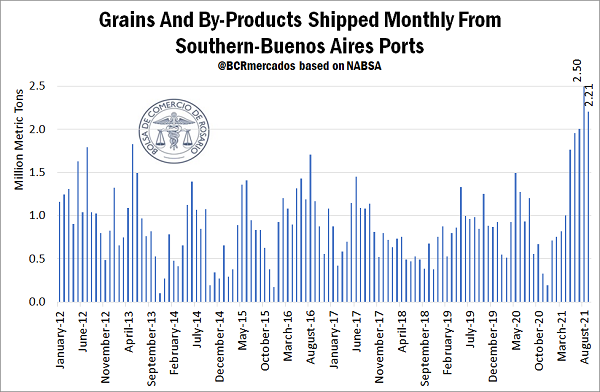Shipments of grains and by-products at record levels in September
In September, shipping of the main grains and by-products from Argentinian ports reached 9.3 Mt, an all-time record for this month. Also, despite the slight fall since August (when 10.7 Mt of grains and by-products where shipped), shipments grew by 34% from September 2020, a considerable rise.
This high volume is mainly explained by the shipments of corn and by-products of the soybean complex. The shipments of maize totalized 4.2 Mt, slightly below August’s shipments, but 31% above September 2020, and a historical maximum for the month.
The soybean complex, for their part, made a considerable contribution with 4.1 Mt, 28% above the same month in 2020. If we disaggregate the complex per product, the highest volume is grabbed by soybean meal, which totalized during last month 2.7 Mt, the highest volume for September since 2015. Meanwhile, shipments of this oilseed reached 800,000 t, while oil shipments totalized 496,000 t.
As for the rest of the complexes included in this analysis, we can highlight sorghum shipments, which in September reached 396,000 tons, almost seven times above 2020 and also setting an all-time record for this month. Last, wheat, barley and sunflower complexes registered 450,000, 90,000 and 97,000 tons, respectively.
Also, a notable aspect is that, although still low, the water level of the Paraná River improved in September with regards to the previous month. The average height in Rosario during last month was 38 cm, while during August it had been -12 cm. It should be noted that for each draft foot lost, about 1,500 and 2,100 tons are missed from shipment, depending on the type of vessel. Therefore, these average 50 cm or 1.64 feet extra during September versus August allowed for the elevation of the average cargo of the vessels leaving from the ports of Rosario hub.
In fact, just as last month we reported that the low water level had taken average ship cargoes of corn to minimum levels in three years, this was reversed in September, when the average cargo was 30,500 t, almost 2,000 t above the previous month.
However, beyond the relative improvement of the water level of the Paraná River and the higher average tonnage per vessel, the ports in the South of Buenos Aires province continue to acquire relative importance within total shippings. Out of the 9.3 Mt of grains and by-products shipped during last month, 2.23 Mt were shipped from the port terminals of Bahía Blanca or Necochea/Quequén. This is the second highest monthly volume of shipped tons in history, only behind August, when 2.5 Mt were shipped from those port terminals.


